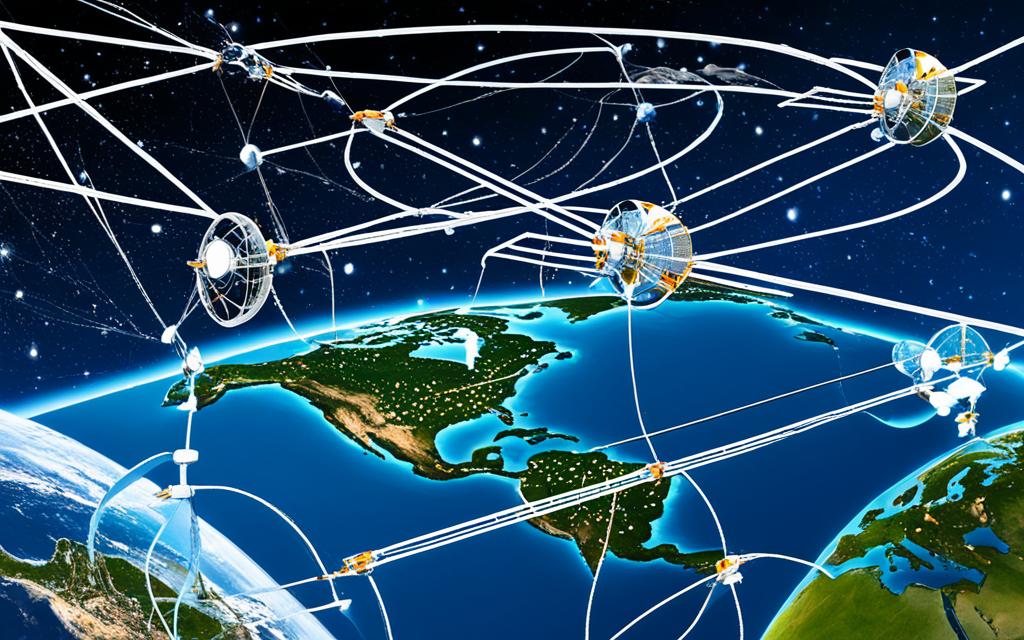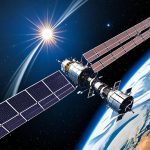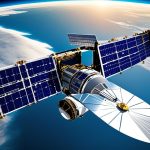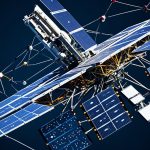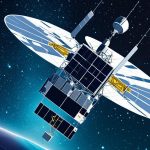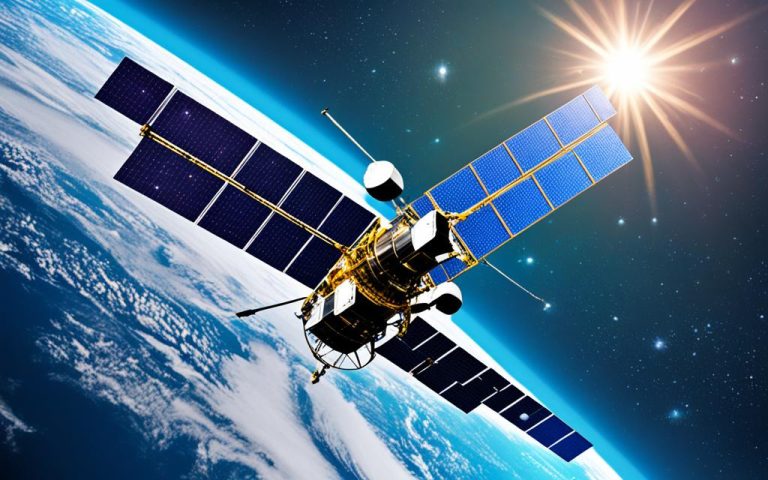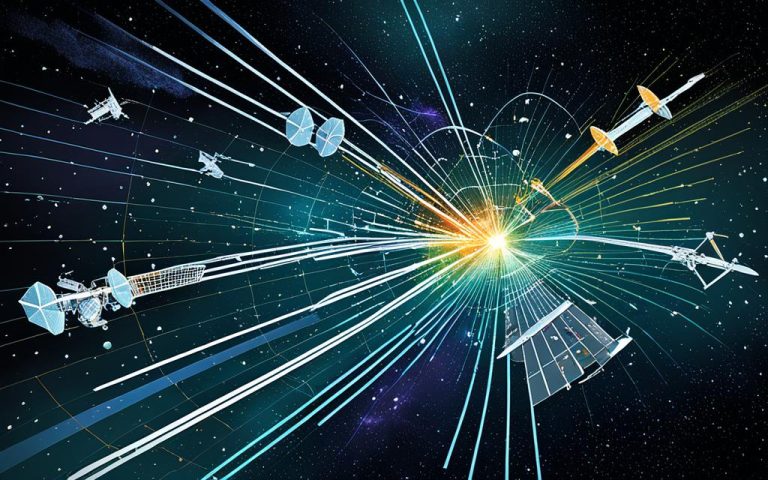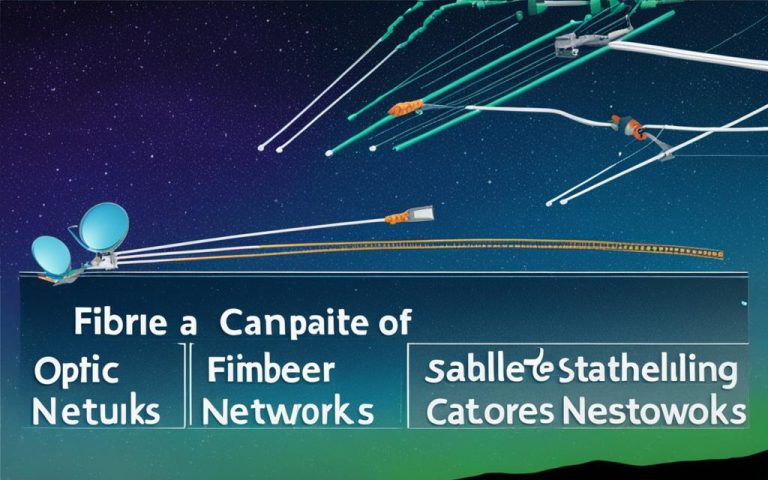The inter-satellite link protocols are constantly evolving to meet the demands of seamless space communication. ISLs, especially optical inter-satellite links, have become crucial for enhancing connectivity and operational efficiency within satellite constellations. With the increasing need for higher data transmission speeds, advancements in ISL technology have paved the way for faster and more reliable data exchange between satellites. These advancements enable satellite communication services to adapt to the evolving requirements of the industry.
Importance of Inter-Satellite Links
Inter-Satellite Links (ISLs) play a fundamental role in enhancing the efficiency and performance of satellite communication services. By seamlessly relaying data between satellites, ISLs enable high-speed data transmission within satellite constellations, resulting in improved connectivity and operational efficiency.
One of the primary advantages of ISLs, particularly optical links, is their ability to exchange data at a much higher rate than traditional methods. This high-speed data transmission capability is essential for meeting the increasing demand for faster communication in satellite systems. Whether it’s transmitting large volumes of data or ensuring real-time communication, ISLs are vital for achieving efficient resource utilization.
Moreover, ISLs prevent network saturation by enabling satellites to bypass ground stations and communicate directly with one another. This direct satellite-to-satellite communication enhances the autonomy and operational flexibility of satellite constellations, allowing for more efficient data transfer and communication.
“ISLs are crucial for efficient resource utilization and to prevent network saturation, making them essential in satellite communication systems.”
– Satellite Communication Expert
With ISLs, satellite missions can achieve enhanced network efficiency, reduced latency, and increased data capacity. These factors are especially vital for sectors such as telecommunications, broadband, military operations, and Earth observation missions, where the efficient and reliable transmission of high-capacity data is critical.
Overall, ISLs are essential for improving the performance and functionality of satellite communication services. By enabling high-speed data transmission, enhancing network efficiency, and preventing network saturation, ISLs significantly contribute to the enhanced efficiency and effectiveness of satellite systems.
The Advantages of ISLs:
- High-speed data transmission within satellite constellations
- Improved connectivity and operational efficiency
- Enhanced network efficiency and reduced latency
- Direct satellite-to-satellite communication, bypassing ground stations
- Facilitation of efficient resource utilization
- Support for sectors such as telecommunications, broadband, military operations, and Earth observation missions
Considering the importance of ISLs in satellite communication systems, it is crucial for organizations and researchers to continue exploring advancements in this technology. By further optimizing ISL protocols and harnessing the potential of high-speed data transmission, the next generation of satellite systems can deliver even greater efficiencies and capabilities.
How Inter-Satellite Links Work
Inter-Satellite Links (ISLs) are indispensable for facilitating high-speed data transmission between satellites within a constellation. These links utilize laser communication technology, enabling rapid and secure exchange of large amounts of data.
Compared to traditional radio frequency (RF) links, optical ISLs offer a more reliable and secure means of communication. The use of laser technology enhances the overall communication efficiency, allowing satellites to achieve high data capacity and speed.
One of the key advantages of ISLs is their ability to reduce the dependence on constant communication with ground stations. By establishing direct communication between satellites, ISLs enhance the autonomy and operational flexibility of satellite constellations.
To better understand how ISLs work, let’s consider an example:
Imagine a satellite constellation consisting of multiple satellites orbiting the Earth. These satellites are equipped with laser communication terminals that utilize ISLs. When one satellite needs to transmit data to another satellite within the constellation, it sends the data by encoding it into laser pulses. These laser pulses are then transmitted to the target satellite through the vacuum of space. Upon receiving the laser pulses, the target satellite’s laser communication terminal decodes them back into data, allowing for seamless communication between satellites.
ISLs offer numerous advantages, such as higher security, faster transmission speeds, and reduced reliance on ground infrastructure. The use of laser communication technology significantly enhances the efficiency and effectiveness of satellite communication systems.
Benefits of Inter-Satellite Links:
- Faster data transmission between satellites
- Enhanced network security and reliability
- Reduced dependence on ground infrastructure
- Improved operational flexibility and autonomy
With the growing demands for high-speed data transmission in satellite communication, ISLs have become an essential component in achieving seamless connectivity and efficient space communication.
Advantages of ISL Technology
Inter-Satellite Links (ISLs) offer significant advantages in satellite communication networks. ISLs enable faster data transfer rates, enhancing the efficiency and reliability of transmitting high-capacity data across space networks. The use of ISLs facilitates high-speed data transmission, benefiting sectors such as telecommunications, broadband, military, and earth observation by enabling faster and more efficient data transfer.
One of the primary advantages of ISL technology is the ability to achieve enhanced network connectivity. By establishing direct links between satellites, ISLs reduce the reliance on ground stations, providing a more robust and resilient network infrastructure. This direct connectivity ensures uninterrupted data transmission, reducing latency and maximizing network performance.
Another key advantage of ISLs is the improved communication coverage they provide. By leveraging ISL technology, satellite missions can achieve broader coverage and reach remote areas that were previously challenging to connect. This expanded coverage enhances communication capabilities in various sectors, enabling services such as remote sensing, disaster response, and global connectivity initiatives.
ISLs also offer several other advantages, including:
- Enhanced signal resilience and improved network reliability.
- Increased data redundancy, ensuring data integrity and reducing the risk of data loss.
- Efficient data prioritization and management, optimizing resource utilization.
Overall, the incorporation of ISL technology in satellite communication systems provides numerous benefits, including faster data transfer rates, enhanced network connectivity, and improved communication coverage. These advantages drive the adoption of ISLs in various sectors and contribute to the growth and evolution of satellite communication networks.
| Advantages of ISL Technology |
|---|
| Faster data transfer rates |
| Enhanced network connectivity |
| Improved communication coverage |
| Enhanced signal resilience and improved network reliability |
| Increased data redundancy |
| Efficient data prioritization and management |
Types of Inter-Satellite Links
Inter-Satellite Links (ISLs) for satellite communication can be classified into two types: RF (radiofrequency) and optical links. Each type offers unique advantages and plays a crucial role in space missions.
RF ISLs
RF ISLs use radio waves for data transmission between satellites. They have been widely used in satellite communication networks and offer certain advantages:
- Wide coverage range for long-distance communication
- Established technology with proven reliability
- Lower cost compared to optical ISLs
Optical ISLs
Optical ISLs utilize lasers to transmit data between satellites. They offer several advantages over RF ISLs:
- Higher data rates, allowing for faster communication
- Greater resistance to interference, ensuring reliable data transmission
- Improved security and confidentiality with narrow beam divergence
Due to these advantages, optical ISLs are considered ideal for inter-satellite communication, particularly in satellite constellations.
Understanding the differences between RF and optical ISLs is crucial when designing communication systems for space missions. The choice between these types depends on factors such as mission requirements, data transfer speed, security needs, and budget considerations.
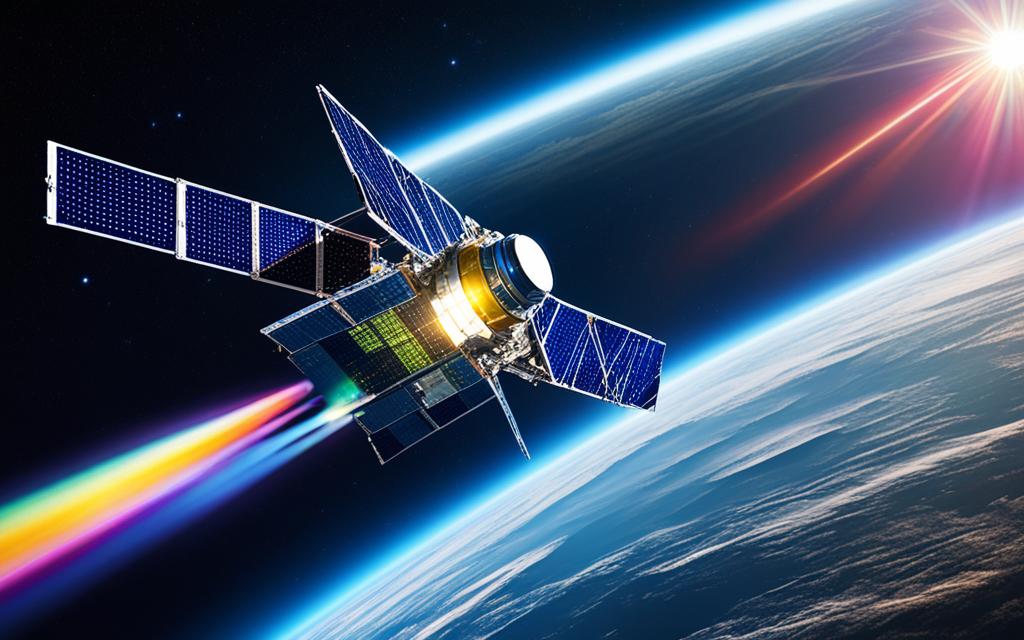
| RF ISLs | Optical ISLs | |
|---|---|---|
| Transmission Method | Radio Waves | Laser |
| Data Rates | Lower | Higher |
| Interference Resistance | Lower | Greater |
| Communication Range | Wide | Limited |
| Security | Standard | Enhanced |
Applications of ISLs in Space Missions
Inter-Satellite Links (ISLs) play a crucial role in various applications within space missions, enabling efficient data transfer and communication between satellites. These links significantly enhance data transfer efficiency, contributing to overall mission success and effectiveness.
One of the key applications of ISLs is in space exploration missions, where they facilitate the real-time communication and data exchange necessary for successful exploration. ISLs enable the transmission of large amounts of data between satellites, supporting critical tasks such as gathering scientific data, capturing high-resolution imagery, and conducting remote sensing.
By enabling direct communication between satellites, ISLs reduce reliance on ground stations, leading to faster and more efficient data transfer. This direct communication capability enhances the autonomy and operational flexibility of satellite constellations, enabling seamless communication between satellites in orbit.
The applications of ISLs in satellite communication extend beyond space exploration. ISLs are instrumental in telecommunications and broadband services, where high-speed data transfer is essential. With their ability to transmit data at fast rates, ISLs support efficient communication and connectivity within satellite networks, improving data transfer efficiency and enhancing network performance.
In military operations, ISLs facilitate secure and reliable communication between military satellites, ensuring efficient exchange of critical information and enhancing situational awareness. ISLs also play a vital role in Earth observation missions, enabling the transmission of high-quality imagery and data that aids in environmental monitoring, disaster management, and resource mapping.
The table below summarizes the key applications of ISLs in space missions:
| Application | Description |
|---|---|
| Space exploration | Enabling real-time communication and data exchange for exploration missions |
| Telecommunications and broadband services | Supporting high-speed data transfer and improved connectivity within satellite networks |
| Military operations | Facilitating secure and efficient communication between military satellites |
| Earth observation | Transmitting high-quality imagery and data for environmental monitoring and resource mapping |
In conclusion, the applications of Inter-Satellite Links (ISLs) in space missions are diverse and critical for efficient data transfer and communication. ISLs enable direct communication between satellites, reduce reliance on ground stations, and enhance overall mission success. Whether in space exploration, telecommunications, military operations, or Earth observation, ISLs contribute to improved data transfer efficiency and enhanced satellite communication.
Market Analysis and Regulations
The satellite communication market is poised for significant growth in the coming years, driven by the rising demand for higher bandwidth, lower latency, and enhanced reliability. As satellite systems integrate with terrestrial networks like 5G, new opportunities and markets emerge for satellite communication services. Market forecasts project substantial growth across various sectors, including:
- Commercial aviation
- Maritime
- Land and Internet of Things (IoT)
- Military and defense
- Civil government and public sector
- Consumer/mass market
These sectors present immense potential for market expansion as satellite communication systems become increasingly vital in meeting the demands of modern connectivity.
Regulatory factors also play a pivotal role in the growth and adoption of satellite communication systems. Spectrum allocation, for instance, governs the availability and use of specific frequency bands, determining the capacity and range of communication services. Standards and regulations ensure interoperability, compatibility, and the reliable functioning of satellite communication systems across different regions and markets. Compliance with these regulatory frameworks is crucial for market participants to access and serve various sectors effectively.
Overall, the market growth prospects for satellite communication systems are promising, with the increasing need for seamless connectivity and reliable communication driving the demand.
Market Growth Forecast
The following table highlights the projected market growth in the satellite communication industry across different sectors:
| Sectors | Projected Market Growth |
|---|---|
| Commercial aviation | 8% CAGR |
| Maritime | 10% CAGR |
| Land and IoT | 12% CAGR |
| Military and defense | 7% CAGR |
| Civil government and public sector | 9% CAGR |
| Consumer/mass market | 15% CAGR |
Conclusion
Advancements in Inter-Satellite Link (ISL) protocols have revolutionized satellite communication systems, enabling faster and more reliable data transfer between satellites. The integration of ISL technology, particularly optical links, has significantly improved data transfer rates and network connectivity within satellite constellations. With the ability to exchange data at higher speeds, ISLs have enhanced communication coverage and operational efficiency in satellite missions.
The Multi-Layered Satellite System (MLSS) architecture, which incorporates multiple satellite layers, offers ultra-high availability and resilience in satellite communication. This integration allows for seamless coordination and efficient data transfer between satellites. The market potential for ISL technology is projected to continue growing, as there is an increasing demand for high-throughput satellite systems in various sectors such as telecommunications, broadband, military, and Earth observation.
Further research and development efforts are crucial to optimize the coordination and interoperability of different layers within MLSS systems. By unlocking the full potential of multi-layered satellite communication, advancements in ISL protocols will continue to drive innovation and advancement in space communication technologies.
FAQ
What are Inter-Satellite Links (ISLs)?
Inter-Satellite Links (ISLs) are critical for enhancing satellite communication systems, allowing for rapid data exchange among satellites. ISLs enable seamless data relay between satellites, enabling high-speed data transmission within satellite constellations.
Why are ISLs important?
ISLs play a fundamental role in enhancing the efficiency and performance of satellite communication services. They enable faster data transfer rates, improved connectivity, and enhanced operational efficiency within satellite constellations.
How do Inter-Satellite Links work?
ISLs facilitate high-speed data transmission between satellites using laser communication technology. Optical ISLs offer advantages such as higher data rates and greater resistance to interference, making them ideal for inter-satellite communication.
What are the advantages of ISL technology?
ISLs offer significant advantages such as faster data transfer rates, enhanced network connectivity, and improved communication coverage. They enable efficient resource utilization and prevent network saturation, enhancing overall communication efficiency.
What are the types of Inter-Satellite Links?
ISLs can be classified into two types: RF (radiofrequency) and optical links. RF ISLs use radio waves for data transmission, while optical ISLs utilize lasers. Optical ISLs offer higher data rates and greater resistance to interference.
What are the applications of ISLs in space missions?
ISLs are integral in various applications within space missions, facilitating efficient data transfer and communication between satellites. They significantly enhance data transfer efficiency, enabling a wide range of satellite communication applications such as telecommunications, broadband services, military operations, and Earth observation missions.
What is the market analysis and regulatory factors for ISLs?
The satellite communication market is predicted to experience significant growth, driven by the increasing demand for higher bandwidth and improved reliability. Regulatory factors, such as spectrum allocation and standards, play a crucial role in shaping the growth and adoption of satellite communication systems.
What is the conclusion of advancements in ISL protocols?
Advancements in ISL protocols have revolutionized satellite communication systems, enabling faster and more reliable data transfer between satellites. ISL technology offers significant benefits in terms of faster data transfer rates, improved network connectivity, and enhanced communication coverage.

